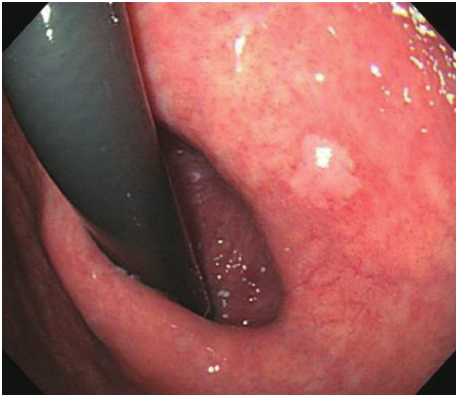Gastric lavage or Stomach Pumping (wash-out) is carried out by nursing staff. It is actually not a sterile procedure. But still sterile apparatus are used while carrying out the procedure. Gastric lavage may be ordered one hourly to rest the gastrointestinal tract as in paralytic ileus or after an operation over stomach or duodenum. If the tube has passed nasally it can be retained for 24 hours but if it is by mouth it should be removed after the procedure is over.
Purpose
- To remove poisonous material from stomach.
- To remove irritable material and to provide rest as in paralytic in ileus.
- To relieve nausea and vomiting.
- To clean stomach before any operation over stomach or duodenum.
- To clean stomach in post-operative gastric operations 😮 prevent dilatation.
Equipment.
One big tray to hold all items 2. Ryle’s tube or other stomach tube (for post*operative purpose to remove only gastric secretion a Ryle’s tube may be used, for removing stomach contents including food particles other thicker calibre tube should be used as thin Ryle’s tube will be blocked by food particles). 3. Kidney tray 4 Lubricant glycerine or liquid paraffin 5. Adhesive tape 6. 50 ml syringe 7. Bath towel 8. Safety pins 9. Bucket or bowl to collect aspirated fluid 10. Piece of mackintosh.
Being A Professional Nurse,You Must Know Gastric Lavage Procedure And Stomach Pump Procedure
- Intimate the patient what you are going to do and why and how much time it will take.
- Protect the patient’s clothing by putting both towels over chest.
- Protect feet by spreading a piece of mackintosh.
- Remove any false tooth or very loose tooth.
- Place patient in sitting position at the side of the bed or in semi-fowler position if unable to sit upright with head tending, forwards.
- Insert the Ryle’s tube as described earlier.
- When tube is in stomach aspirate the fluid by back drawing the piston of syringe.
- Remove the syringe, measure the quantity and drain out of syringe into a bowl or bucket. Keep the tip of the tube pinched by pressing by tip of fingers while the syringe is removed.
- Re-connect the syringe with the tip of Ryle’s tube and repeat the same procedure till all fluid from stomach has been aspirated out.
- If the tube is passed through nose and further aspiration is required, retain the tube by folding the tube and fixing it to patients check.
- Record the aspiration procedure in input and output chart with description of amount, colour of aspiration fluid.
Precautions
- Blood in aspirated fluid calls for discontinuance of procedure immediately.
- Observe the patient for pallor, weak pulse or signs of shoe’
- Never do aspiration within 3-4 hours of food unless specially called for.
Gastric lavage, also known as stomach pumping or gastric irrigation, is a medical procedure that involves the cleansing of the stomach contents. It’s usually performed in cases of acute poisoning or drug overdose. Here’s a guide to how gastric lavage works, presented in a tabular format:
| Step | Description |
|---|---|
| 1. Patient Assessment | Before the procedure, the patient is assessed for any contraindications, such as risk of bleeding, perforation, or aspiration. The patient’s airway is secured to prevent aspiration into the lungs. |
| 2. Positioning | The patient is positioned properly, usually lying on their left side with their head down, to reduce the risk of aspiration and to facilitate the flow of the lavage fluid. |
| 3. Insertion of Tube | A large-bore orogastric tube is inserted through the mouth and into the stomach. The correct placement of the tube is confirmed, often by aspiration of gastric contents or by auscultation. |
| 4. Administration of Fluid | Normal saline or tap water at room temperature is introduced into the stomach in small quantities (usually 100-200 ml for adults, less for children). |
| 5. Aspiration of Stomach Contents | After the fluid is introduced, it’s allowed to settle briefly in the stomach, and then it’s aspirated out. This process is repeated several times until the aspirated fluid is clear. |
| 6. Monitoring | Throughout the procedure, the patient’s vital signs and oxygen saturation are closely monitored. The patient’s electrolyte balance and hydration status are also watched. |
| 7. Post-Procedure Care | After the procedure, the patient is monitored for any complications like aspiration pneumonia. Supportive care is provided as needed. |
It’s important to note that gastric lavage is not always the preferred method of decontamination in poisoning cases. The decision to perform gastric lavage depends on the type of poison ingested, the amount, the time since ingestion, and the patient’s overall condition. This procedure should only be performed by trained medical professionals.
Conclusion
Gastric lavage, or stomach pumping, is a crucial procedure used to empty the stomach and remove harmful substances in emergency situations. While it may have certain risks and precautions, its potential benefits in cases of poisoning or drug overdose cannot be undermined. Properly performed by experienced healthcare professionals, gastric lavage plays a vital role in managing acute toxic ingestions and serves as a potentially life-saving measure.
